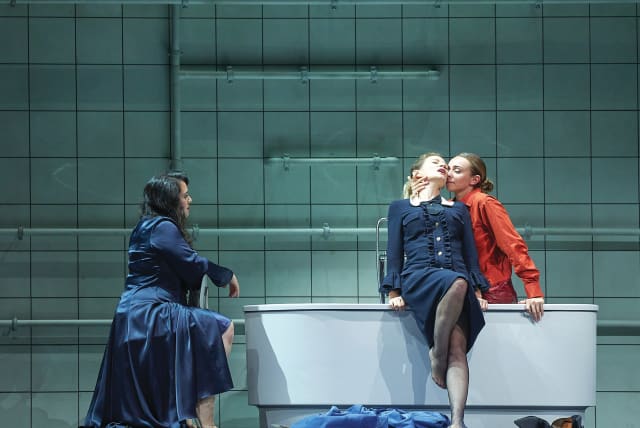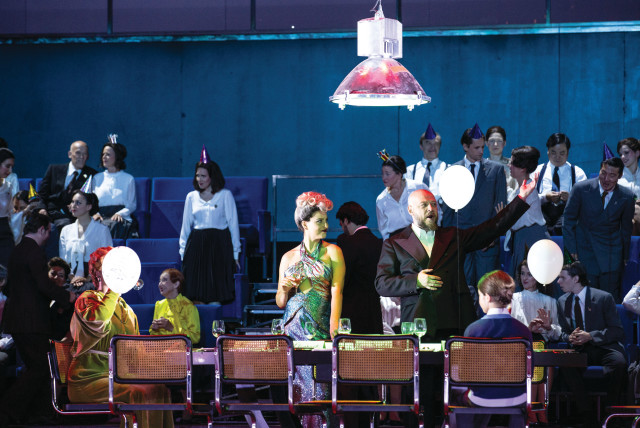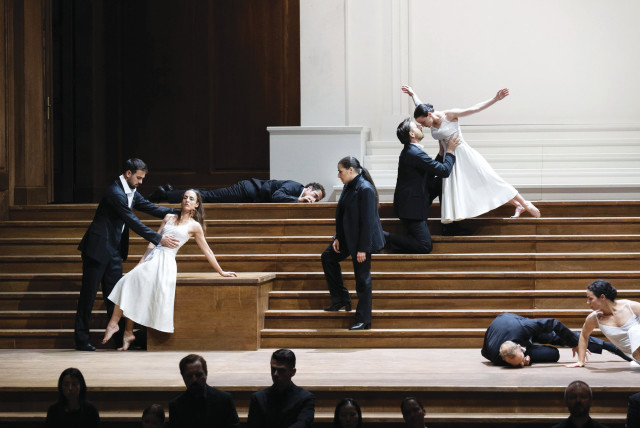Operatic extravaganza unveiled at 2023 Salzburg Festival

The Salzburg Festival continues to be a celebration of artistic exploration and musical excellence.
The Salzburg Festival, a bastion of classical music, recently showcased two new operas, typical examples of regietheater. This allows directors to reimagine opera staging, diverging from the composer’s original intent.
One of the high points was Mozart and de Ponte’s The Marriage of Figaro. This opera delves into political themes and aristocratic privileges. Austrian director Martin Kušej took an unorthodox approach, representing Count Almaviva as the ruthless leader of a mafia criminal syndicate. The overture itself saw the protagonists flaunting firearms, indulging in alcohol, and experimenting with narcotics.
Raimund Orfeo Voigt’s minimalist stage designs were set in a hotel. Sliding units transformed into a bar, bathroom, basement, parking lot, and a garden. Under the baton of Raphaël Pichon, the Vienna Philharmonic delivered a refined reading of the score.
Kušej’s production abounded with inventive twists. Susanna’s skirmish with Marcellina, unfolded in the ladies’ room. The scene involved Susanna concealing toilet paper, spraying the floor with a liquid, and an unfortunate Marcellina emerging from the lavatory entangled in toilet paper and slipping on the floor.
Act 2 took place in a bathroom. As Almaviva and the Countess exited to retrieve a key to unlock a closet, Susanna, who had been hiding in the bathtub, emerged dripping wet, to swap places with Cherubino, who was concealed in the closet. At the end of the act, Bartolo lit his cigar using his gun. These moments lent a distinct charm to the proceedings.
André Schuen depicted Almaviva as a character deeply involved in criminal activities, quick to resort to violence. In his first appearance, Almaviva shoots someone, steals his cash and then his main henchman, Basilio, disposes of the corpse. Almaviva drew his weapons at the slightest pretext, notably at the opera’s conclusion when he lined up his blind-folded suspects and was only prevented from executing them by the appearance of the Countess. His apology to her lacked conviction.
Adriana González was outstanding as the distraught Countess. She made her first appearance swallowing drugs and consuming a bottle of wine. Her delivery of “Dove sono” was exquisite, though “Porgi amor” may have pushed the boundaries with Gustave Courbet’s overtly sexual painting L’Origine du monde prominently displayed behind her. She wistfully looked at the painting while her nude lookalike took a bath.
During set changes, Pedro Beriso played the fortepiano, providing interludes, even on occasion featuring Mozart’s music. To compete with Mozart is a tall order, and it almost always falls flat. The only things missing in this highly entertaining evening were some of the cuts of Mozart’s score, including Marcellina’s aria in the last act.
Verdi’s Macbeth
POLISH DIRECTOR Krzysztof Warlikowski had a fascinating new take on Verdi’s Macbeth. For Shakespeare, Verdi, and his librettist Piave, the Macbeth family was driven by pathological ambition. Warlikowski’s perspective emphasized the Macbeths’ infertility as the motivation for their actions.
Malgorzata Szczesniak’s design featured a large bench dominating the vast Grosses Festspielhaus stage. The witches’ abode moved onto the stage from the left. The witches wore masks and sunglasses and had yellow-and-black radiation warning symbols. During Macbeth’s subsequent interaction with them, some appeared as children with masks to make them look old, while others were occupied with mutilating dolls.
While the witches prophesy, Lady Macbeth is examined by a gynecologist who informs her that she is infertile and cannot have children. This took place in a screened cubicle that moved in and out from the right. This space later transformed into King Duncan’s bedroom, featuring only a hospital stretcher. These pivotal moments were projected above the stage live by video transmission.
Soprano Asmik Grigorian is the current reigning Salzburg prima donna. She and baritone Vladislav Sulimsky gave thrilling performances in the lead roles. Grigorian really shone in the banquet celebrating their coronation. Adorned in exotic attire, she delivered her brindisi aria flawlessly, while Macbeth obsessed on a haunting apparition of the murdered Banquo drawn on a balloon. The last course of the banquet featured a baby doll presented on a platter, certainly a macabre touch.
Grigorian’s real tour de force came during her final sleepwalking scene. Stripped of her finery, with disheveled hair, her vocal and dramatic abilities were on full display.
Macbeth gradually descended into madness, castrated himself, and was confined to a wheelchair. He became fixated on a vision of children wearing identical masks with facial features resembling Banquo. One of Sulimsky’s standout moments was his unforgettable delivery of his final aria, “Pietà, rispetto, amore.”
Bass Tareq Nazmi as Banquo gave a wonderfully sonorous performance, the highlight being the aria where he fears for his future and that of his children.
The Konzertvereinigung Wiener Staatsopernchor, under the direction of Jörn Hinnerk Andresen, played a key role in the production’s success. Their most notable contribution came in “Patria Oppressa.” While this powerful aria unfolded, a chilling scene took place: Lady Macduff administered poisoned drinks to several children at a movie theater, sparing them from the Macbeths’ cruelty.
The bodies of the children were then laid across the front of the stage as Macduff, portrayed by the tenor Jonathan Tetelman, sang “Ah! la paterna mano.” Tetelman’s magnificent rendition added yet another unforgettable touch to the performance.
Philippe Jordan’s animated conducting of the Vienna Philharmonic injected energy into Verdi’s score, although it occasionally overpowered the singers.
Orfeo ed Euridice
ANOTHER OUTSTANDING production was a revival of Gluck’s timeless opera, Orfeo ed Euridice. This opera recounts Orfeo’s journey to the realm of the dead to bring his deceased wife, Euridice, back to life. Director and choreographer Christof Loy opted for Gluck’s rarely performed Parma version, enhanced by the ballet music from a Parisian rendition.
Johannes Leiacker’s minimalist sets, featuring wood-paneled walls and a central staircase leading to a white gateway, were simple but elegant. Ursula Renzenbrink dressed the performers in black and white, with some brightly colored costumes in the scenes set in Elysium.
Conducted by Gianluca Capuano, Les Musiciens du Prince – Monaco, playing period instruments, delivered a masterful interpretation of the score. The chorus occupied the lower staircase on the stage and gave an impeccable performance.
As the opera commenced, silence reigned as the sparse stage gradually filled with dancers. Eventually, Cecilia Bartoli, dressed in black with her hair in a ponytail, made her entrance as Orfeo. Bartoli continues to captivate audiences with her exceptional voice and acting prowess. Her unique charisma was evident throughout.
The famous aria “Che farò senza Euridice” is usually taken at a very slow pace. Bartoli sang it at a fast, agitated tempo, emphasizing Orfeo’s anger because Euridice was finally dead. However, at the third stanza repeat, her grief took hold of her and she reverted back to the usual slow tempo.
While Orfeo was the centerpiece, sopranos Melissa Petit as Euridice and Madison Nonoa as Amore played smaller yet impactful roles, enhancing the overall success of the evening.
This minimalist production, featuring soloists, choir, and dancers, combined with elegant staging, created a true Gesamtkunstwerk, a “total work of art,” and a festival highlight.
These operas demonstrated the festival’s commitment to pushing boundaries. Each presentation incorporated innovative elements showcasing the talents of exceptional performers and creative minds. The Salzburg Festival continues to be a celebration of artistic exploration and musical excellence.
The writer, an emeritus professor of medicine, writes, reviews, and lectures on music, art, and history (www.irvingspitz.com). He was recently featured in the book A Century of Achievement, Ed by R Keene and CD Bremner, 2022, which outlines the careers of the 100 most-distinguished medical graduates of the Witwatersrand Medical School from 1890-1990. He may be contacted at irving@spitz.com.
Jerusalem Post Store
`; document.getElementById("linkPremium").innerHTML = cont; var divWithLink = document.getElementById("premium-link"); if (divWithLink !== null && divWithLink !== 'undefined') { divWithLink.style.border = "solid 1px #cb0f3e"; divWithLink.style.textAlign = "center"; divWithLink.style.marginBottom = "15px"; divWithLink.style.marginTop = "15px"; divWithLink.style.width = "100%"; divWithLink.style.backgroundColor = "#122952"; divWithLink.style.color = "#ffffff"; divWithLink.style.lineHeight = "1.5"; } } (function (v, i) { });


